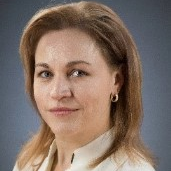Assessment and Management of Hydrological Risks Due to Climate Change
A special issue of Water (ISSN 2073-4441). This special issue belongs to the section "Hydrology".
Deadline for manuscript submissions: closed (26 December 2022) | Viewed by 32562
Special Issue Editors
Interests: water management; water structures; hydrology; rainwater management; environmental impact assessment; environmental risks
Special Issues, Collections and Topics in MDPI journals
Special Issue Information
Dear Colleagues,
In recent years, climate change is increasing at alarming rates, which has made obvious changes to hydrological processes and temporal/spatial distribution of water resources. Some regions have suffered from increasing rainfall intensity and consequently increasing flood risks that have affected many people and forced them to migrate to safe areas. However, some regions have suffered from the risks of water shortage and drought. The frequency and severity of such events are expected to continue to increase in the future as the climate warms due to increasing CO2 emission, population and urbanization. In this context, there is a critical need to assess and manage the hydrological risks due to climate change for understanding the likely hydrological changes and provide realistic mitigation and adaptations for such changes.
This Special Issue aims to provide an opportunity to researchers and specialists in the fields of climate change and hydrological dynamics to discuss and share their newest research findings in this field. The focus of this issue is to present practical mitigation and adaptation measures to hydrological risks due to climate change. Authors are invited in the general topic of the development and application of the related tools and theories with climate change and hydrological changes. Potential topics include, but are not limited to, the following:
- Climate and hydrological models;
- Hydro-meteorological data analysis;
- Risk assessment of climate change impacts on hydrological dynamics;
- Novel modeling and uncertainty analysis for expected changes in hydrological dynamics in watersheds, urban areas and coastal areas;
- Applications of GIS, RS and AI for hydrologic forecasting, mapping and risk analysis;
- Mitigation and adaptation methods to reduce the expected impacts of climate change and hydrological changes on communities.
Prof. Dr. Martina Zeleňáková
Dr. Hany F. Abd-Elhamid
Guest Editors
Manuscript Submission Information
Manuscripts should be submitted online at www.mdpi.com by registering and logging in to this website. Once you are registered, click here to go to the submission form. Manuscripts can be submitted until the deadline. All submissions that pass pre-check are peer-reviewed. Accepted papers will be published continuously in the journal (as soon as accepted) and will be listed together on the special issue website. Research articles, review articles as well as short communications are invited. For planned papers, a title and short abstract (about 100 words) can be sent to the Editorial Office for announcement on this website.
Submitted manuscripts should not have been published previously, nor be under consideration for publication elsewhere (except conference proceedings papers). All manuscripts are thoroughly refereed through a single-blind peer-review process. A guide for authors and other relevant information for submission of manuscripts is available on the Instructions for Authors page. Water is an international peer-reviewed open access semimonthly journal published by MDPI.
Please visit the Instructions for Authors page before submitting a manuscript. The Article Processing Charge (APC) for publication in this open access journal is 2600 CHF (Swiss Francs). Submitted papers should be well formatted and use good English. Authors may use MDPI's English editing service prior to publication or during author revisions.
Keywords
- risk assessment
- mitigation
- climate change
- hydrological risks
- floods
- drought






